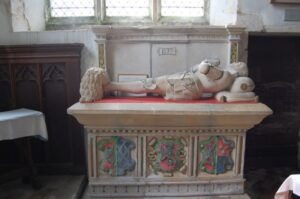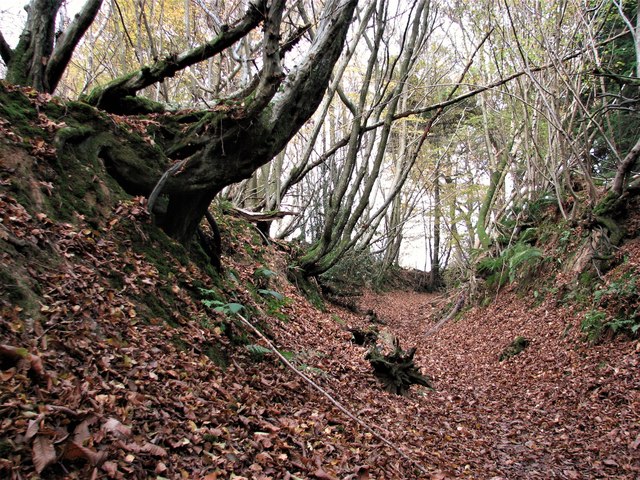Sussex has long been known for its interesting folk tales, from the Knuckers, water dragons living in Knuckerholes, to all-female cuckoo families, fairies and jumping devils. Close to home though, is a scary story, about the so-called Sussex Cannibal (or according to some versions, the Sussex Ogre.)
During the 16th century, we are told that a knight, seven feet tall, roamed the area around Brede, looking to catch and kill his supper – children. Sir Goddard Oxenbridge was a member of a family that had owned Brede Place since the 15th century.
The story goes that after local children starting disappearing, Sir Goddard was believed to be the person responsible, taking them to satisfy his craving for one child a day. His servants, aware of his activity, let it be known locally that Sir Goddard had a terrible appetite, but that such was his unnatural strength and other than human powers, no ordinary metal weapon would be able to kill him.
To lure the monster the children set out a large barrel of beer near a place called Groaning Bridge, which Sir Goddard found and freely indulged in. When he had drained the contents and was thus incapable of doing anything, the children set to work with a large saw made of wood and cut him in two. Some say that his presence is still felt by the bridge. Indeed, so strong was the belief in a supernatural presence that early in the 20th century, staff from the Psychical Research Society made an investigation of the area.

Naturally there is no evidence of anything like that happening, and Sir Goddard died peacefully at Brede Place in 1531. His splendid marble tomb, complete with his effigy wearing armour, is in St. George’s church in Brede. It is perhaps likely that the story was spread because Sir Goddard was a Roman Catholic, at a time when the Protestant reformed religion was becoming popular. Sussex was one of the areas where the adherence to the new religion was particularly strong, as it was to puritanism and the cause of parliament during the Civil War in the 17th century.
Some people say that Sir Goddard is still at home, although tales of ghosts and ghouls may well be the work of 18th century pirates, who used Brede Place as a sort of safe house for storing their smuggled goods. They made up stories to keep the nosy away and stop them from finding their illicit stores. However, a fireman reported seeing a spectral figure when the house was badly damaged in a blaze during the 1970s. It may have been the shade of a priest who lived in the house at one time, possibly during the ownership of the Catholic Oxenbridge family, or even when the site was owned by the great Norman abbey of Fecamp in the 11th century. If it is a priest, he was supposedly disturbed when the chapel was altered in the 17th century. Although it might just be Sir Goddard on the prowl, mysteriously restored to one piece, looking for more children to devour!
Image Credits: Patrick Roper CC , Jmc4 CC .




A great story, thank you for a fine retelling of it! Many years ago, when I visited Brede Church, I was told that the tomb was opened in the 19th century, and that the skeleton of Sir Goddard inside was indeed unusually tall – and was in two halves, one on top of the other!
Many thanks for your kind comment Paul, and for the interesting extra information. So many of these old tales often have some basis in fact. Perhaps you should publish a piece about your ancient and honourable role? MM
I remember being taken on a school walk over Groaning Bridge when I was at kindergarten in Brede in the 1950’s. We were told the story of the giant before setting out and it scared us rigid. Needless to say that, when we arrived at the bridge, we ran like hell!